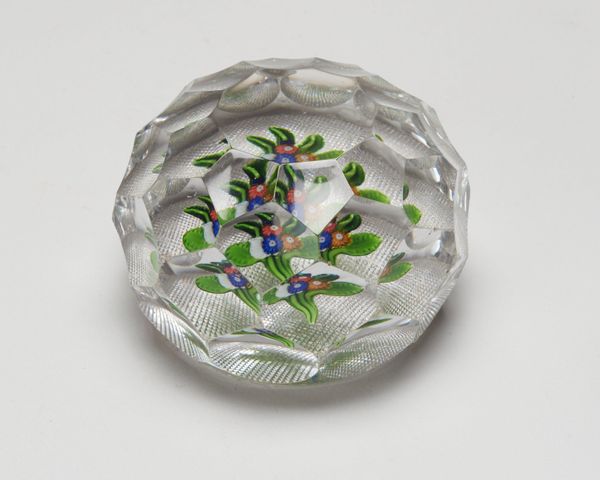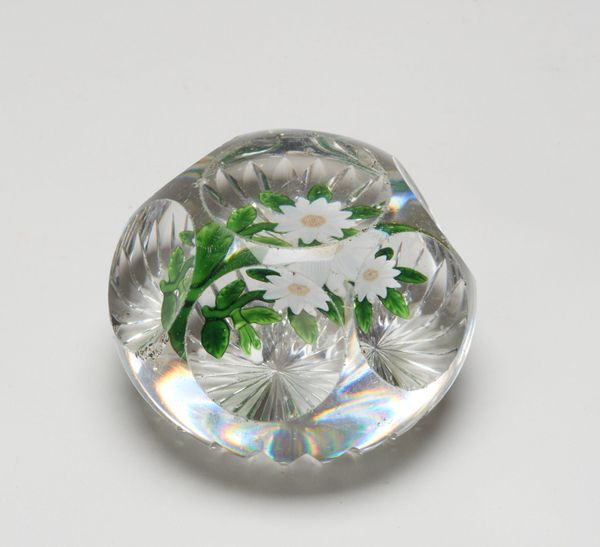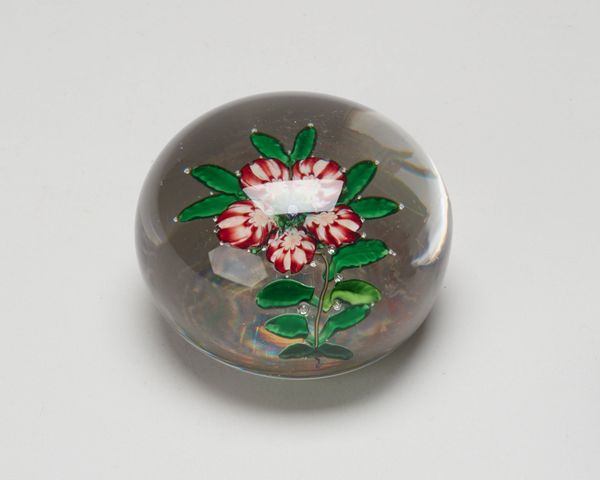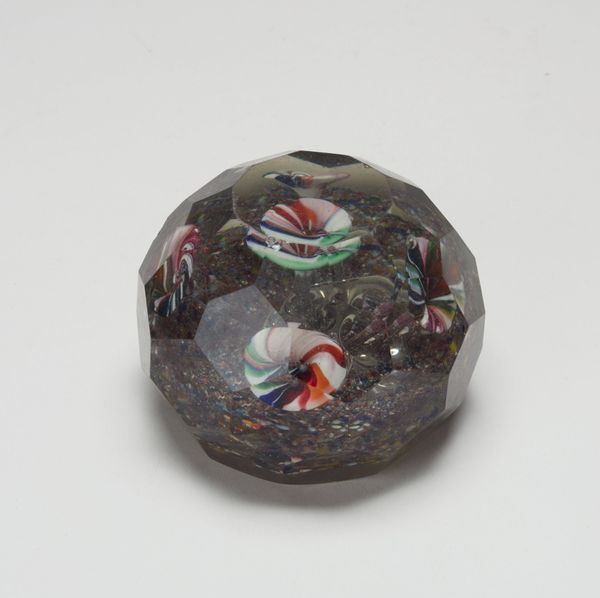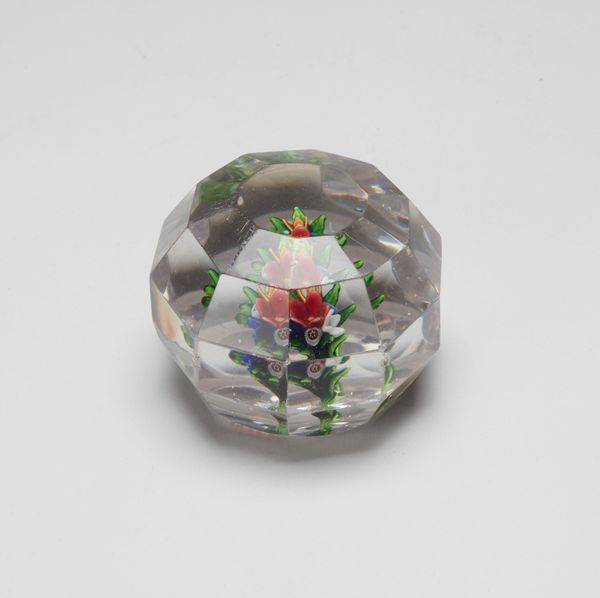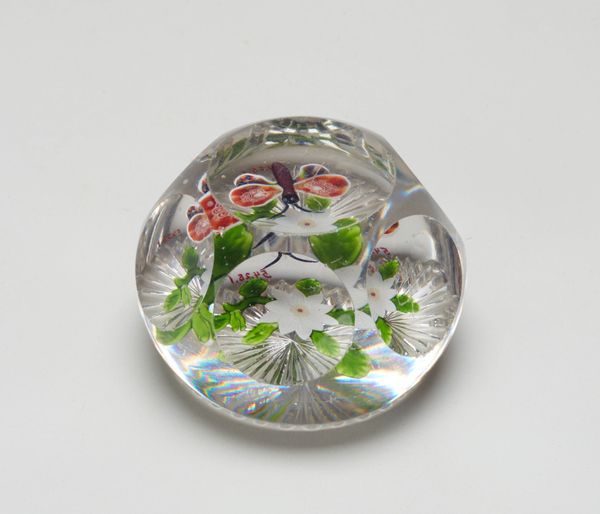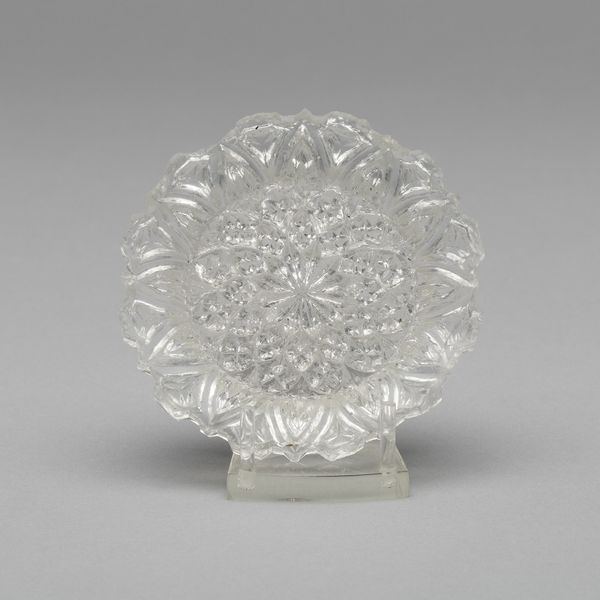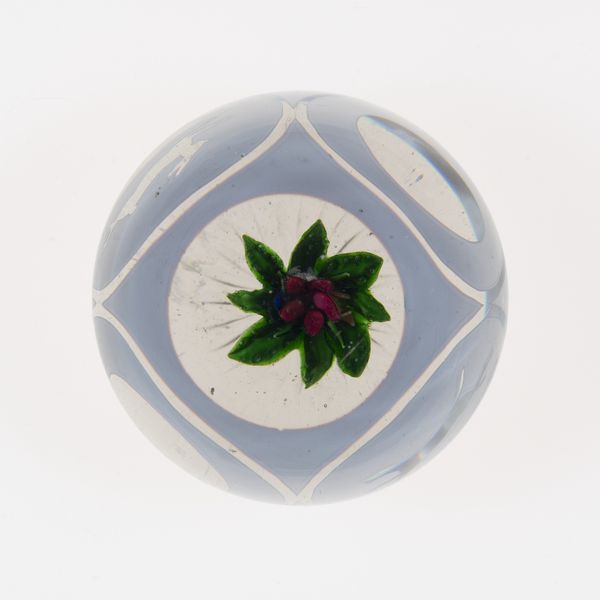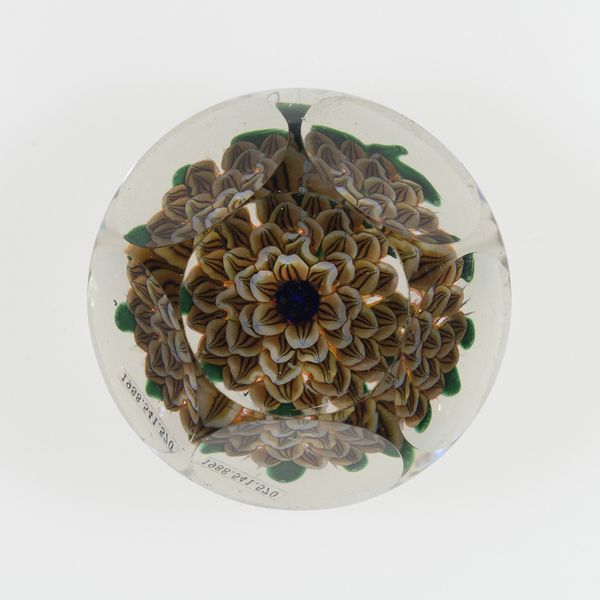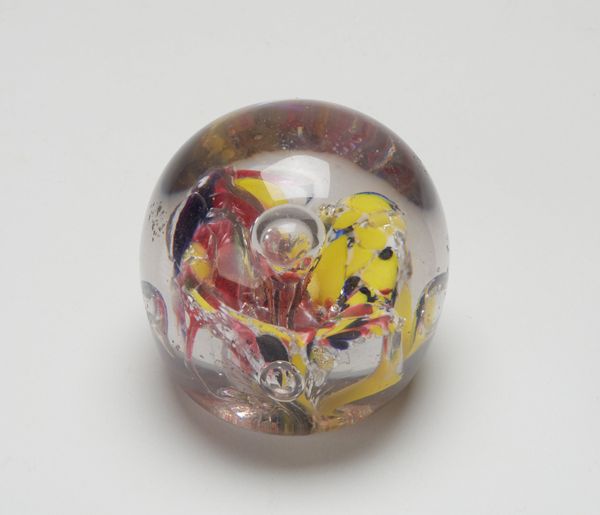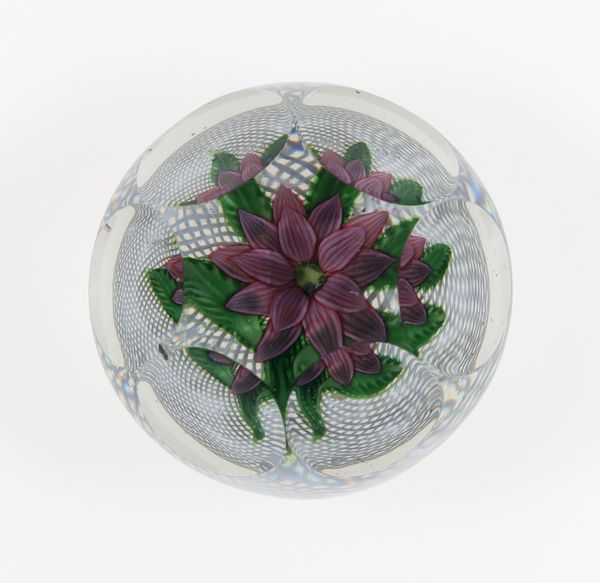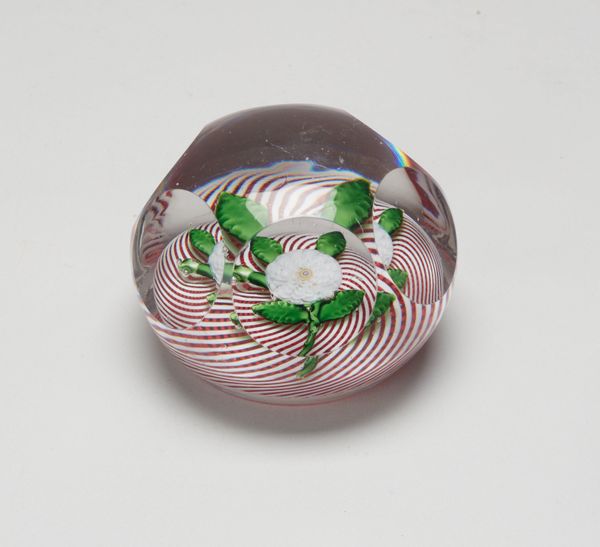
Dimensions: 2 3/8 x 3 1/4 x 3 1/4 in. (6.03 x 8.26 x 8.26 cm)
Copyright: Public Domain
Editor: So this lovely glass paperweight, made around the 19th century by Saint Louis Glass Works in France… it's so tactile, I just want to pick it up! But also, it feels somehow precious and a little bourgeois. What does its existence tell us about the world it came from? Curator: A perfectly valid reaction! Consider this: mass production in the 19th century led to a surplus of material goods and increasingly sophisticated consumers. Paperweights like this one from Saint Louis Glass Works served a dual function: practical, of course, but also decorative, demonstrating taste and a degree of affluence. Who owned objects like these, and what values did they represent? Editor: So, almost a signal of social status through everyday objects? Do you think the Art Nouveau style played a role in this? Curator: Absolutely. Art Nouveau, with its emphasis on natural forms and intricate design, perfectly suited this desire for decorative, yet functional, items. Think about the labor involved in creating those delicate floral motifs encased in glass. Owning such a piece reflected not just wealth, but also an appreciation for craftsmanship – at a time when industrialization threatened traditional skills. How does knowing that influence your interpretation? Editor: I see it now - it wasn't just a pretty object. It's also about preserving older skills at a time of huge change and demonstrating you have some wealth to spare, and, by extension, more social status. Fascinating. Curator: Exactly. Art objects aren't just beautiful, they're entangled with economic, social, and political forces, aren’t they? It gives us something new to consider. Editor: Right, it shows art exists inside broader networks and can signal particular ideas in society. Curator: Yes! Never underestimate the power of a paperweight!
Comments
No comments
Be the first to comment and join the conversation on the ultimate creative platform.
